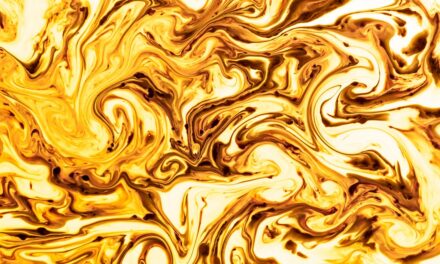Kinetic sculpture, an art form that marries movement with artistic expression, has a rich and varied history that stretches back to ancient times. The earliest examples of kinetic art can be traced to the ingenious mechanisms of ancient Greece, where automata were crafted to perform simple tasks, often powered by water or wind. These early innovations laid the groundwork for a fascination with motion that would evolve over centuries.
The Renaissance period saw a resurgence of interest in mechanics, with artists like Leonardo da Vinci designing intricate machines that blurred the lines between art and engineering. His sketches of flying machines and mechanical devices not only showcased his artistic prowess but also his understanding of the principles of motion. As we move into the 20th century, the landscape of kinetic sculpture began to transform dramatically.
Artists such as Alexander Calder and Jean Tinguely emerged, pushing the boundaries of what could be considered art. Calder’s mobiles, delicately balanced and set in motion by air currents, introduced a new aesthetic that celebrated spontaneity and chance. Tinguely, on the other hand, created complex machines that not only moved but also commented on the nature of art itself, often incorporating elements of absurdity and playfulness.
This period marked a significant shift in the perception of kinetic sculpture, as it began to be recognised not merely as a novelty but as a legitimate and profound form of artistic expression.
Summary
- Kinetic sculpture has a rich history, from early innovations in the 20th century to the contemporary art scene today.
- The principles of motion and mechanics are essential in creating kinetic sculpture, allowing artists to bring their creations to life.
- Artists use a variety of materials in kinetic sculpture, from traditional metal and wood to modern plastics, to achieve different effects and movements.
- Technology has played a significant role in the evolution of kinetic sculpture, from early clockwork mechanisms to the use of modern electronics and sensors.
- Kinetic sculpture is a unique intersection of art and engineering, blending creativity with technical skill to create captivating works of art.
The Principles of Motion and Mechanics in Kinetic Sculpture
The Balance of Forces
The balance of forces, the distribution of weight, and the interplay of tension and release are all critical considerations when designing a kinetic piece. For instance, a mobile must be meticulously crafted to ensure that its components can move freely without toppling over, requiring an acute awareness of centre of gravity and equilibrium.
Exploring Inertia and Momentum
Moreover, kinetic sculptures often engage with concepts such as inertia and momentum, allowing artists to explore how these forces can be harnessed to create dynamic experiences for viewers. The movement in these sculptures can be driven by various means—be it wind, water, or mechanical systems—each choice influencing the final aesthetic and emotional impact of the work.
A New Dimension of Engagement
This intricate dance between art and science not only challenges traditional notions of sculpture but also invites audiences to engage with the artwork in a more interactive manner, as they become part of the experience through their own movements and reactions.
Exploring the Materials Used in Kinetic Sculpture: From Metal to Wood to Plastic
The choice of materials in kinetic sculpture is as diverse as the artists who create them. Traditionally, metals such as steel and aluminium have been favoured for their strength and durability, allowing for intricate designs that can withstand the rigours of movement. Artists like Calder often employed lightweight metals to create airy structures that could sway gracefully in response to their environment.
The reflective quality of metal also adds an additional layer of visual intrigue, as light interacts with the surfaces, creating ever-changing patterns that enhance the sense of motion. However, wood has also played a significant role in the evolution of kinetic sculpture. Its natural warmth and versatility allow for a different aesthetic approach, often evoking a sense of organic movement.
Artists such as George Rickey have utilised wood in conjunction with metal to create works that resonate with both mechanical precision and natural beauty. In recent years, plastic has emerged as a popular material due to its malleability and lightweight properties. This shift towards more contemporary materials reflects broader trends in art and design, where sustainability and innovation are increasingly prioritised.
The use of recycled plastics in kinetic sculptures not only challenges traditional material hierarchies but also speaks to contemporary concerns about environmental impact.
The Role of Technology in Kinetic Sculpture: From Clockwork to Modern Electronics
The integration of technology into kinetic sculpture has revolutionised the field, expanding the possibilities for movement and interaction. Historically, many kinetic sculptures relied on clockwork mechanisms or simple motors to create motion. These mechanical systems required a deep understanding of gears, levers, and pulleys, allowing artists to craft intricate movements that captivated audiences.
The charm of these early works lay in their mechanical ingenuity, often evoking a sense of nostalgia for a bygone era of craftsmanship. In contrast, contemporary kinetic artists are increasingly embracing modern electronics and digital technology to enhance their creations. The advent of programmable motors and sensors has opened up new avenues for exploration, enabling artists to create responsive sculptures that react to their surroundings or audience engagement.
For instance, some artists employ motion sensors that trigger movement when viewers approach, creating an interactive dialogue between the artwork and its audience. This fusion of art and technology not only enriches the viewer’s experience but also challenges traditional notions of authorship and agency within the artistic process.
The Intersection of Art and Engineering in Kinetic Sculpture
Kinetic sculpture exists at a unique intersection between art and engineering, where creativity meets technical expertise. This duality is what makes kinetic art so compelling; it requires artists to possess not only an artistic vision but also a solid understanding of engineering principles. Many contemporary kinetic sculptors collaborate with engineers or technologists to bring their visions to life, resulting in works that are both aesthetically pleasing and mechanically sophisticated.
This collaboration often leads to innovative solutions for movement and stability that might not have been possible through traditional artistic methods alone. For example, advancements in materials science have allowed artists to experiment with lighter structures that can achieve greater heights or more complex movements without compromising stability. Furthermore, this intersection encourages a dialogue between disciplines, fostering an environment where artistic experimentation can lead to technological advancements and vice versa.
As such, kinetic sculpture serves as a testament to the power of interdisciplinary collaboration in pushing the boundaries of what is possible within both art and engineering.
Kinetic Sculpture in Public Spaces: Impact and Engagement
The Dynamic Nature of Kinetic Art
The dynamic nature of kinetic art can transform public spaces into vibrant environments where art becomes an integral part of daily life.
Fostering Community Connection
Moreover, kinetic sculptures can foster a sense of connection among community members by providing shared experiences that transcend individual perspectives. For instance, installations that respond to environmental factors such as wind or light can create ever-changing visual spectacles that draw people together in appreciation of both nature and art. Additionally, public kinetic sculptures often become focal points for social gatherings or events, further embedding them into the cultural fabric of their surroundings.
Enhancing Urban Landscapes
As cities increasingly recognise the value of public art in enhancing urban landscapes, kinetic sculptures stand out as powerful tools for engagement and community building.
The Influence of Kinetic Sculpture on Contemporary Art and Design
The impact of kinetic sculpture extends far beyond its own genre; it has significantly influenced contemporary art and design across various disciplines. Artists working in painting, installation art, and even digital media have drawn inspiration from the principles of movement inherent in kinetic sculpture. This cross-pollination has led to innovative approaches that challenge traditional boundaries within the art world.
In design, the influence is equally profound. Architects and product designers are increasingly incorporating kinetic elements into their work, creating buildings and objects that respond dynamically to their environment or user interaction. This trend reflects a broader cultural shift towards interactivity and engagement in design practices, where functionality is enhanced by aesthetic considerations rooted in movement.
As such, kinetic sculpture continues to inspire new generations of artists and designers who seek to explore the possibilities inherent in motion.
The Future of Kinetic Sculpture: Innovations and Trends
Looking ahead, the future of kinetic sculpture appears bright with potential for innovation and exploration. As technology continues to advance at an unprecedented pace, artists are likely to push the boundaries even further by integrating artificial intelligence and robotics into their work. This could lead to entirely new forms of interaction where sculptures not only respond to human presence but also learn from it over time.
Additionally, there is a growing emphasis on sustainability within contemporary art practices, which may influence the materials used in kinetic sculpture moving forward. Artists are increasingly seeking out eco-friendly materials or employing techniques that minimise waste while maximising impact. This trend aligns with broader societal concerns about environmental responsibility and could lead to exciting new directions for kinetic art.
In conclusion, kinetic sculpture stands at a fascinating crossroads where art meets science, technology meets creativity, and tradition meets innovation. As this dynamic field continues to evolve, it promises to captivate audiences with its ability to engage both visually and physically while challenging our perceptions of what art can be.
If you are interested in exploring more about the world of art, you may want to read an introduction to the painting “Self-Portrait in Front of the Easel” (1914) by Lovis Corinth. This article provides insight into the life and work of the artist, offering a deeper understanding of the masterpiece. You can find the article here.
FAQs
What is a kinetic sculpture?
A kinetic sculpture is a type of art that incorporates movement into its design. It is typically powered by mechanical means, such as motors, gears, or wind, and is designed to create a sense of motion and change.
What are the mechanics involved in kinetic sculptures?
Kinetic sculptures often use a variety of mechanical components, such as gears, pulleys, levers, and motors, to create movement. These components are carefully designed and engineered to produce the desired kinetic effects in the sculpture.
What materials are commonly used in kinetic sculptures?
Kinetic sculptures can be made from a wide range of materials, including metal, wood, plastic, and even glass. The choice of materials often depends on the specific design and aesthetic goals of the artist.
What are some famous examples of kinetic sculptures?
Famous examples of kinetic sculptures include “Metropolis II” by Chris Burden, “The Wind Wand” by Len Lye, and “Strandbeest” by Theo Jansen. These sculptures showcase the diverse ways in which motion, mechanics, and materials can be combined to create captivating works of art.
How are kinetic sculptures different from traditional sculptures?
Unlike traditional sculptures, which are typically static and stationary, kinetic sculptures are designed to move and change over time. This dynamic quality adds an extra layer of complexity and interest to the artwork, engaging viewers in a unique and interactive experience.


